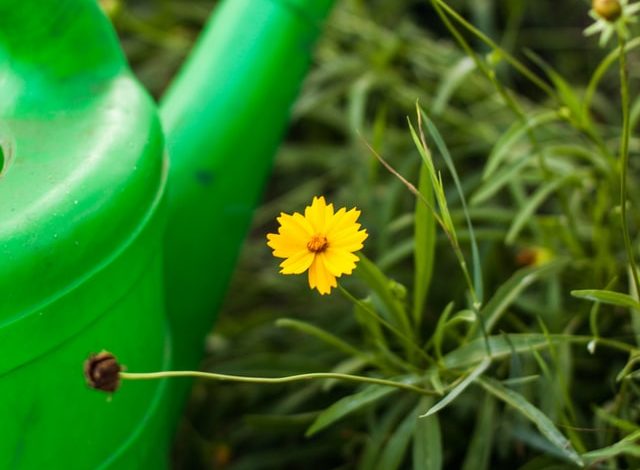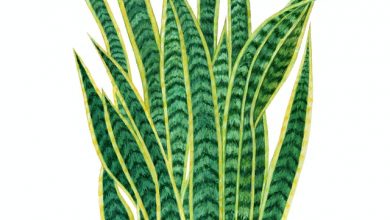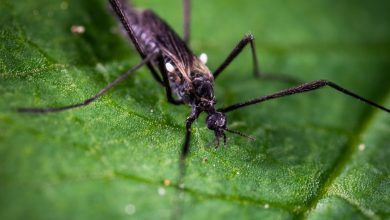How Often Should You Water Your Garden?

The question of how best to water your home garden is a dynamic one. Individual plants require different levels of care, and various outside factors influence what your garden needs at any given time. However, there are important general guidelines for garden watering that can help.
We’ve put together a guide to cover some of the most critical aspects and the “do’s and don’ts” of keeping your garden watered adequately. Read on to learn how to help your garden grow and thrive.
What Time to Water Your Garden
As a general rule, watering your garden in the early morning hours is best. By watering earlier in the day, you reduce your chances of water evaporating with the sun being out. Watering later in the day can also lead to the soil drying out faster than anticipated.
How Often and How Long to Water Your Garden
Your watering schedule depends on a few different factors; we’ll take a look at some of the most influential ones below that can help you determine how often and how long to water your plants:
- Soil Type – The type of soil used directly impacts how much and how quickly your plants receive water. Denser soils can restrict watering, while looser soils may allow for water to reach your plants too immediately. It’s essential to familiarize yourself with the type of soil in your garden and its corresponding water infiltration rate. Then, water your plants accordingly. Here is a quick guide to the main soil types to help you determine watering needs:
- Clay: Infiltrates by .2 inches per hour
- Clay Loam: Infiltrates by .3 inches per hour
- Loam: Infiltrates by .5 inches per hour
- Sandy Loam: Infiltrates by one inch per hour
- Silt Loam: Infiltrates by .4 inches per hour
- Sand: Infiltrates by two inches per hour
- Type of Plant – Different plants have unique watering requirements. We’ve listed some of the most common plant types and their watering schedule needs for you below:
- Annuals: Water once per day
- Bulbs: Water once per week
- Succulents: Water once per week
- Shrubs: Water daily for newly planted shrubs and every two to three days for established shrubs
- Perennials: Water once per week
- Herbs: Water once per week
- Fruit: Water once per week
- Vegetables: Water two to three times per week
- Trees: Water daily for newly planted trees, and water every two to three days for established trees
- Weather – Keep a close eye on weather conditions and be prepared to modify your watering schedule accordingly. When the weather is hotter or dryer, you may need to give your plants some extra water. Alternatively, when the weather calls for rain, you may need to skip a scheduled watering. Checking soil regularly can help you determine if extra or less watering is necessary.

How Much Water to Use
When watering, how much water you use will mainly be determined by the type of plant being watered. Below are some common outdoor garden plant types and their typically required watering amounts:
- Annuals – Water until the soil is moist through top three inches
- Bulbs – Water until the soil is moist through the top one inch
- Succulents – Water until drain holes at bottom emit overflow
- Shrubs – Water until the soil is moist through the top one inch
- Perennials – Water until the soil is moist through the top one inch
- Herbs – Water until the soil is moist through the top one inch
- Vegetables – Water until the soil is moist through top 12 inches
- Trees – Provide 10 gallons of water per inch of tree trunk diameter
Best Way to Supply Water
Every gardener tends to have their preferred methods of supplying water to their plants. When choosing how to provide water, however, it’s important to consider the functionality of each process and whether it will work well with the plants you have in your garden. Here are the different types of water supply methods you may choose to use:
- Sprinklers – Sprinkler systems are one of the most popular ways of watering gardens. With sprinklers, a large area can be covered quickly. Sprinklers are best used with soil that absorbs quickly, such as sand-based.
- Soaker Hoses – With soaker hoses, a long rubber hose with small holes is run around or near your plants. A slow and steady drip of water is then supplied to your plants. While not the fastest watering method, if your concern is avoiding evaporation and maintaining consistency, this may be a good choice.
- Basins – Watering basins are crafted per each individual plant. To create a basin, you’ll dig a circle roughly two feet in diameter around the plant and then fill with the corresponding amount of water.
- Drip Irrigation – Similar to soaker hoses, drip irrigation consists of plastic tubing that has small holes that drip water through to the plants nearby. This method is crafted to focus water more directly to the roots of your plants through individual lines attached to the main pipe.
- Furrows – Furrows are commonly associated with vegetable gardens but are not used as often these days. When using the furrow method, a trench running alongside the plant row is dug and then filled with water. This method is not known to be consistent and can take a while to disperse water.
- Hoses – Watering with a hose can work well for plants spaced far apart; however, using a hose for plants in close proximity to each other may cause a problem due to the lack of ability to control how much water is given to each plant.

Pro Watering Tips
There is definitely a science to watering your garden effectively. Below, we’ve got some pro watering tips that can help you establish the best watering habits for your home garden:
- Avoid Night Watering – Try to stick to morning watering as often as possible. Watering in the afternoon can lead to too much evaporation. Watering in the evening can promote mold and fungus growth. Furthermore, watering in the evenings is also known to attract more insects.
- Water at the Base – By watering your plant at the base near the roots, you can ensure water is given more directly to the plant and avoid wetting the leaves.
- Thoroughness Is Key – When people think of watering, how often you water is usually discussed most. Adequate watering actually comes down more to technique and thoroughness than schedule. When you water your plants, try to focus on watering the correct amount, concentrating moisture in the soil properly, and keeping water directed towards the root of the plant.
- Pay Attention to the Soil – Soil has a much more significant impact on your plant’s watering needs than you may think. When watering your garden, always be sure to heed the type of soil you have and water accordingly to avoid under-watering or over-saturation. The soil type breakdown at the top of this article can help you get this technique down.
- Don’t Water All at Once – When you need to provide a particular plant with a more substantial amount of water, try to divide your watering into parts. Giving a lot of water all at once can cause a large amount of it to evaporate or run-off instead of soaking into the soil and root system.
- Don’t Over-Saturate – By waterlogging or over-saturating your plant’s corresponding soil, you run the risk of cutting off vital oxygen supplies and depleting nutrients that the plant needs to grow and thrive. Pay attention to how deep the soil feels moist and water according to the plant’s needs, as shown in this article.
- Water Evenly – Even distribution of water in garden care is essential. You’ll, of course, want to focus your watering efforts mainly on the root and base of the plant; however, watering around the plant can also help with nutrient distribution.
- Don’t Wet the Leaves – Plant leaves are highly susceptible to diseases and mold growth. When the leaves are moistened too much through watering, it can promote higher rates of disease, as well as insect infestations.
- Container Gardens May Require More – Unbeknownst to many home gardeners, container gardens may require more water than plants established directly in the ground. Plant containers are magnets for heat, which can dry the soil out more quickly than usual. Pay attention to how moist your plant’s soil is and give an extra watering session as needed.
- Avoid Large Sprinklers – Large sprinklers can be great for grass maintenance or groves of trees. Still, when used with plant gardens, the water is dispersed too quickly and widely to reach the plants’ necessary parts. Also, water from sprinkler systems tends to evaporate a good bit before reaching the ground.



